-

HPLC and UHPLC columns from KNAUER ... well-known for high quality and performance.
Reliable and robust - more than 45 years of know-how in separation columns.

Reliable and robust - more than 45 years of know-how in separation columns.
In the field of analytical HPLC columns we can offer a solution for nearly any analytical separation task. KNAUER offers about 6,000 columns for analytical HPLC and UHPLC applications as well as for purification tasks in the preparative scale.
Suited for a wide range of analytical, semi-preparative and process scale separations in normal phase and reversed phase mode.
Learn more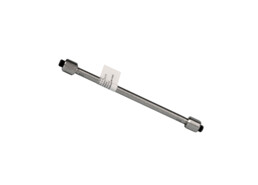
Eurospher II is introduced as the new workhorse for an even wider range of application areas, suitable for analytical, semi-preparative and process-scale separations. The logical choice to take on routine analyses as well as the most ambitious chromatoraphy tasks
Learn more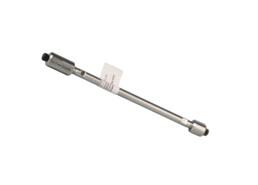
The chiral stationary phases (CSPs) of KNAUER’s Eurospher® II Chiral HPLC columns were designed to tackle a wide range of chiral separation tasks.
Learn more
Eurosil Bioselect columns feature a wide-pore stationary phase and were specifically designed to separate large biomolecules such as proteins and peptides.
Learn more
Eurokat columns are valuable for food analysis and especially developed for the separation of organic acids, carbonhydrates, alcohols and even complex mixtures of these compounds.
Learn more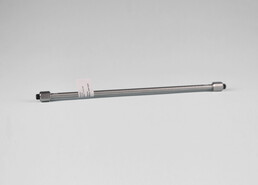
Silica gel based KNAUER columns for HPLC and UHPLC in the most often used separation modes

Classical Reversed Phase columns for HPLC and UHPLC
Most often used stationary phase in reversed phase mode. Silica gel based columns with C18 modification are available with or without endcapping. Classically endcapped phases are slightly more hydrophobic and unpolar than the not endcapped phases.
C18 columns are ideally used for acidic, basic and neutral analytes in reversed phase mode, e.g.:
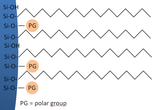
C18 A or AQ columns for polar reversed phase applications with 100 % aqueous mobile phase
C18 stationary phase for the analysis of more polar and hydrophilic compounds in reversed phase mode (USP L1). Silica gel based columns with C18 modification with hydrophilic endcapping. Because of their modification, C18A or C18 aq phases can be operated under 100 % aqueous conditions without destroying the stationary phase, what is not recommended for classical C18 phases caused by their hydrophobicity.
These phases are ideal for the analysis of:
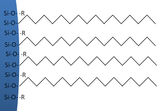
Columns for more unpolar analytes in Reversed Phase
C18 stationary phase with a special, high efficiency or polymeric unpolar endcapping style. Because of the high carbon content and the protection of the Silica gel these materials are also suited for the use of mobile phase in an extended pH range from typically pH 1-12.
While a high endcapped C18 phase is characterized mostly by the high carbon content, a polymeric endcapped phase also provides an increased steric selectivity.

Hydrophobic and polar characteristics combined
C18 stationary phase for the analysis of more polar and hydrophilic compounds in reversed phase mode. Silica gel based columns with C18 modification with hydrophilic endcapping.
These phases are ideal for the analysis of:

Classical C8 columns for HPLC and UHPLC
C8 is a silica gel based stationary phase in reversed phase mode with alternative selectivity compared to C18 phases. C8 modifications are available with a slightly hydrophobic endcapping or without endcapping.
Compared to C18 phases, these columns show less retention due to the lower hydrophobicity.
These phases are ideal for the analysis of:

C8A columns for highly polar reversed phase applications with 100 % aqueous mobile phase
Hydrophilic C8A phase with alternative, more polar selectivity, suited for the use with pure aqueous mobile phases
Alternative selectivity to C8 with stronger interactions for polar compounds; 100% aqueous applications with very polar compounds.
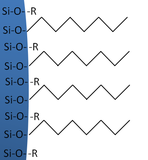
Columns for more unpolar analytes in Reversed Phase
The C8 stationary phase in Reversed Phase mode has alternative selectivity compared to C18 phases. The silica gel based columns feature a C8 modification with full hydrophobic endcapping and base deactivation, making them stable over a wider pH range.
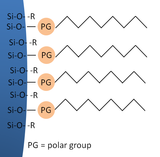
Hydrophobic and polar characteristics combined in C8 columns with polar embedded group
C8 stationary phase for the analysis of more polar and hydrophilic compounds in reversed phase mode. Silica gel based columns with C8 modification with hydrophilic endcapping.
These phases are ideal for the analysis of:
pharmaceuticals, where analytes often have basic or acidic groups. For the separation of these compounds these supports exhibit an enhanced polar selectivity. That means: In comparison to a classical bonded C8 column acidic compounds show a higher retention whereas basic compounds show a slight decrease of retention on an embedded polar column
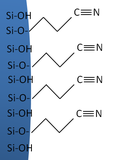
Cyano or CN for Normal Phase and Reversed Phase
CN is one of the most versatile stationary phases that can be used in reversed phase mode as well as in normal phase mode.
The cyano modification supports the pi-pi interaction as well as polar and hydrophobic interactions with low polarity solvents. These phases are preferred for compounds with double bonds and aromatic groups. Cyano bonded phases show unique selectivity for polar compounds and are more suitable than bare silica for normal-phase gradient separations. The cyano functional group is a strong dipole that can interact with other dipoles or induce dipoles on solutes. These phases also exhibit moderate hydrophobicity due to the alkyl linker.
Due to the quick equilibration time of the CN bonded phase, it is the best choice for gradient elution in normal phase mode. CN phases can be used as a less polar alternative to Si phases.
The material is typically preferred for

C1 columns for reversed phase applications
C1 stationary phases show the lowest retention of all reversed phase phases on the market. The application area is mainly the separation of nonpolar solutes. It can also be used for the separation of proteins in the HIC mode.
The C1 phases from KNAUER are available without endcapping.

C4 columns for Reversed Phase in HPLC and UHPLC
C4 stationary phases (USP L26) are often used in reversed phase mode for different application areas. They are suitable for:

C30 for Reversed Phase applications
C30 is a stationary phase with a high carbon load. The high coverage of the support results in a very dense packing and in an excellent shape selectivity and stability even at pH 1. The C30-bonding type is available with several pore sizes and in several particle sizes. Especially the wide pore supports are showing enhanced shape selectivity.
The application field of the C30 packings is the separation of isomers of carotonoides and other long alkyl chain solutes, that cannot be separated on classical C18 columns.

Phenyl columns for Reversed Phase in HPLC and UHPLC
Phenyl stationary phases (USP L11) in reversed phase mode with alternative selectivity for
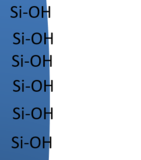
Si columns for Normal Phase and HILIC applications
Unmodified Silica gel materials were the first ones used for chromatography. This is the reason the mode is called "Normal phase" (NP). They are still used in HPLC, although Reversed Phase (NP) is by far the most often used HPLC mode today.
A wide range of porous Si materials is available, characterized by:
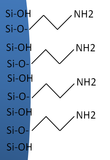
Amino columns for Normal Phase and HILIC applications
Amino (NH2) bonded silica gel phases can be used ideally in the normal phase and HILIC mode. They show alternative normal-phase selectivity to unbonded silica, especially for aromatics.
Amino columns can also be used in the HILIC mode for carbohydrate analysis and for other polar compounds. Their weak anion-exchange properties can be used in the analysis of anions and organic acids.
Typically, the amino group is bonded to the silica support via a propyl linker.
Most Amino phases shown here come without endcapping, only ProntoSIL Amino E is a fully endcapped amino propyl bonded phase.
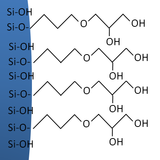
Diol columns for Normal Phase in HPLC and UHPLC
Diol packing material can be universally used in different polar modes (NP, RP and HILIC). Diol bonded phases are a versatile alternative to unbonded silica for normal-phase separations with shorter equilibration times.
The hydroxyl groups provide good selectivity without excessive retention, caused by the weaker H-bonding of the diol layer than of silanols. Some diol bonded phases have been developed specifically for applications in the HILIC mode.

Cyano or CN for Normal Phase and Reversed Phase
CN (USP L10) is one of the most versatile stationary phases that can be used in reversed phase mode as well as in normal phase mode.
The cyano modification supports the pi-pi interaction as well as polar and hydrophobic interactions with low polarity solvents. These phases are preferred for compounds with double bonds and aromatic groups. Cyano bonded phases show unique selectivity for polar compounds and are more suitable than bare silica for normal-phase gradient separations. The cyano functional group is a strong dipole that can interact with other dipoles or induce dipoles on solutes. These phases also exhibit moderate hydrophobicity due to the alkyl linker.
Due to the quick equilibration time of the CN bonded phase, it is the best choice for gradient elution in normal phase mode. CN phases can be used as a less polar alternative to Si phases.
The material is typically preferred for

Si columns for Normal Phase and HILIC applications
Unmodified Silica gel materials were the first ones used for chromatography. This is the reason the mode is called "Normal phase" (NP). They are still used in HPLC, although Reversed Phase (NP) is by far the most often used HPLC mode today.
A wide range of porous Si materials is available, characterized by

Amino columns for Normal Phase and for HILIC applications
Amino (NH2) bonded silica gel phases can be used ideally in the normal phase and HILIC mode. They show alternative normal-phase selectivity to unbonded silica, especially for aromatics.
Amino columns can also be used in the HILIC mode for carbohydrate analysis and for other polar compounds. Their weak anion-exchange properties can be used in the analysis of anions and organic acids.
Typically, the amino group is bonded to the silica support via a propyl linker.
Most Amino phases shown here come without endcapping, only ProntoSIL Amino E is a fully endcapped amino propyl bonded phase.

Zwitterionic and polar columns for HILIC applications
Based on ultra-pure Silica gel, zwitterionic HILIC phases are ideal for the analysis of polar and ionizable compounds. Stronger interaction of more polar compounds with stationary aqueous layer.
Faster elution of nonpolar compounds is possible due to minor hydrophobic interactions. Retention increases with the charge of the analyte.
Recommended for the analysis of hydrophilic compounds like:
Enantioseparation of racemates
Available in a wide range of dimensions for analytical, preparative and SMB (simulated moving bed) applications, Eurospher II Chiral columns are the perfect choice for even the most challenging enantioseparation tasks.
As chiral separations are not very well predictable, KNAUER offers a chiral screening service for your Samples.

Eurospher II Chiral-AM uses the chiral selector Amylose-tris-(3,5-dimethylphenylcarbamate) and is equivalent to Chiralpak AD.
KNAUER offers 2 different CPS versions: Eurospher II Chiral-AM is designed for separations in normal phase mode, Eurospher II Chiral-AM-RP for separations in reversed phase mode.
Eurospher II Chiral-AM columns are able to separate neutral, acidic and basic racemates.

Eurospher II Chiral-OM uses the chiral selector Cellulose-tris-(3,5-dimethylphenylcarbamate) and is equivalent to Chiralcel OD
KNAUER offers 2 different CPS versions: Eurospher II Chiral-OM is designed for separations in normal phase mode, Eurospher II Chiral-OM-RP for separations in reversed phase mode.
Eurospher II Chiral-OM columns are able to separate neutral, acidic and basic racemates.
Eurospher II Chiral-NR is an immobilized brush-type phase with very broad generality and complementary selectivity to Eurospher II Chiral-AM and OM. In many cases it is similar to Eurospher II Chiral-AM or Chiral-OM, but much more stable. The Chiral-NR selector is covalently bound, so that you can use all HPLC-eluents.
Eurospher II Chiral-NR is similar to the immobilized IA, IB and IC columns.
It is perfectly suited for preparative separations.
HPLC of sugars, organic acids and alcohols
Based on a sulfonated cross-linked styrenedivinylbenzene copolymer and available in several ionic forms (H, Ca, Pb and Ag). This particular cation exchanger is characterized by an outstanding density of functional groups, making it the ideal choice for your ion exclusion, size exclusion and ligand exchange chromatography.
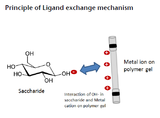
Eurokat Pb and Ca: Polymer phases for the determination of mono- and disaccharides
Based on a sulfonated cross-linked styrenedivinylbenzene copolymer, the ionic forms Pb and Ca are best suited for the analysis of smaller carbohydrates line mono- and disaccharides and sugars up to DP 4. No organic solvents are needed which makes these columns an excellent choice for food applications.
Which of the both phases should be used best is defined by your sample composition.

Eurokat Na: Polymer phase for the determination of sugar oligomers
Based on a sulfonated cross-linked styrenedivinylbenzene copolymer, the ionic form Na is best suited for the analysis of sugar oligomers up to DP 8. No organic solvents are needed what makes these columns an excellent choice for food applications.

Eurokat H: Polymer phase for ion exclusion / ligand exchange
Sulfonated cross-linked styrenedivinylbenzene copolymer phase for the determination of organic acids, carbohydrates and alcohols
H-form, 8 % cross linkage, pressure stable up to maximum 100 bar
Cation exchanger, extremly long lasting lifetime when correctly handled, best results with aqueous
eluents and small amounts of anorganic acids, recommended eluent 0,01 N sulfuric acid, usage of up to 10 % organic content in the mobile phase is possible
Recommended application areas:
Eurokat H is especially designed for the analysis of organic acids and even complex mixtures of acids, sugars and alcohols as well as sugar alcohols.
The use of larger pore silica-based bonded phases leads to improvements in resolution, capacity and recovery of proteins and other biomolecules, due to a reduction in size exclusion mechanism and enhanced molecular diffusion rates. A pore size of 300 Å has become the accepted standard for wide pore silica gels because it has been found to be suitable for a broad range of molecular weight proteins, peptides and oligonucleotides. In general, peptides exceeding approximately 50 amino acids and oligonucleotides greater than 25 residues are preferentially analyzed on 300 Å materials.

Analytical wide pore HPLC Columns for the determination of biomolecules bigger than 2000 Da
Silica gel based KNAUER columns for the analysis of larger molecules (between 2000 - 5000 Da) like proteins and peptides. To separate these molecules, wide pore silica gels are applied. Typically a pore size of 300 Å is recommended. C18 bonded phases are often chosen for the analysis of small peptides. For larger or more hydrophilic analytes please choose another wide pore phase. For rather small biomolecules up to about 5000 Da, C18 phases with different endcapping styles can be used. KNAUER offers a classical endcapping style as well as a hydrophilic “AQ” type endcapping.

Analytical wide pore C18A HPLC Columns for the determination of biomolecules up to 5000 Da
Silica gel based wide pore KNAUER columns with C18 modification and hydrophilic or aqueous endcapping style for the analysis of larger molecules (between 2000 - 5000 Da) like proteins and peptides. The C18A modification is more polar compared to a classical C18 phase and can also be used with 100% aqueous eluents. Therewith, it is more often used for the analysis of hydrophilic proteins.
Recommended application areas:
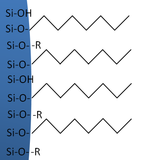
Analytical wide pore HPLC Columns for the determination of biomolecules bigger than 5000 Da
Silica gel based KNAUER columns for the analysis of larger molecules (between 5000 - 20,000 Da) like proteins and peptides. To separate these molecules, wide pore silica gels are applied. Typically a pore size of 300 A is recommended.
For middle sized proteins up to about 20,000 Da, C8 phases with shorter carbon chains compared to C18 phases are recommended.

Analytical wide pore HPLC Columns in the C4 modification
Silica gel based KNAUER columns for the analysis of larger molecules (>20,000 Da) like proteins and peptides. To separate these molecules, wide pore silica gels are applied. Typically a pore size of 300 Å is recommended. For larger sized proteins bigger than 20,000 Da, C4 phases with shorter carbon chains compared to C18 and C8 phases are recommended.
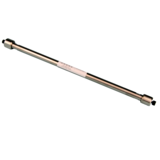
AppliChrom® GPC/SEC columns for biopolymers and aqueous polymers

AppliChrom® GPC columns for GPC analysis of organic molecules using THF, toluene, chloroform

AppliChrom GPC columns for GPC analysis organic (DMAc or DMF)

Optimized for DMSO-GPC applications

Special GPC/SEC-columns for aqueous analysis of neutral, anionic and additional cationic polymers
For GPC / SEC analysis of
Analytical HPLC Column hardware


Preparative HPLC Column hardware


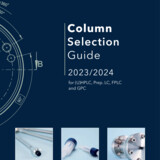
KNAUER column portfolio for HPLC/UHPLC, Prep LC, FPLC and GPC.

KNAUER HPLC Column Selection Guide for Reversed Phase
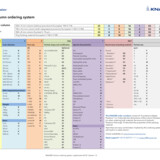
KNAUER HPLC and UHPLC Columns ordering chart

USP L codes of KNAUER columns and phases
Or just more information about our products?
Please send us your request.
We are happy to answer your questions about our products and services.
Monday to Friday
7 am- 5 pm CET
Available for you anytime